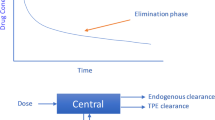Abstract
Background: The available evidence suggests strongly that intravascular thrombosis is mediated predominantly by tissue-factor and its activation of factor X, which in the presence of factor Va, calcium, and phospholipid (prothrombinase complex) effectively converts prothrombin to thrombin. In vitro experiments have shown that low molecular weight heparins (LMWHs) have greater anti-Xa activity than unfractionated heparin; however, it remains unclear as to whether their antithrombotic effects in vivo are determined by a similar mechanism. We determined the ability of plasma obtained from patients with either unstable angina or non-ST segment elevation myocardial infarction (MI) receiving the LMWH enoxaparin (anti Xa:IIa ratio 3:1) to inhibit tissue factor-mediated thrombin generation and to inactivate platelet prothrombinase.
Methods: Platelet rich plasma was prepared by suspending washed donor platelets in the plasma of 7 patients participating in the TIMI 11A study. Samples were obtained before, 1 hour after a 30-mg IV bolus of enoxaparin and 6 hours after the third subcutaneous injection (1.0–1.25 mg/kg given subcutaneously every 12 hrs). Tissue factor (0.1 ng/ml) and 10 mM CaCl2 were added to initiate extrinsic coagulation. At timed intervals prothrombin activation fragment 1.2 (F1.2) levels (thrombin generation) were measured using an ELISA technique. Inactivation of reformed platelet prothrombinase by samples obtained at the same time points was also determined.
Results: Patient plasma obtained 1 hr after treatment initiation and 6 hours after the third subcutaneous injection inhibited tissue factor mediated prothrombinase assembly by 31% and 11%, respectively and platelet prothrombinase activity by 27% and 22%, respectively.
Conclusion: We conclude that enoxaparin in plasma concentrations achieved routinely in clinical practice is able to: (1) inhibit tissue factor mediated extrinsic coagulation by preventing platelet surface prothrombinase assembly, and (2) inactivate platelet prothrombinase activity and resulting thrombin generation. These observations suggest that a LMWH's anti-Xa activity (and anti-Xa:IIa profile) is important in determining its overall antithrombotic potential. Clinical trials comparing agents with differing anti-Xa:IIa properties will be required, however, to provide proof of concept.
Similar content being viewed by others
References
Bauer KA, Kass BL, ten Cate H, Hawiger JJ, Rosenberg RD. Factor IX is activated in vivo by the tissue factor mechanism. Blood 1990;76:731–736.
Davie E, Fujikawa K, Kisiel W. The coagulation cascade: Initiation, maintenance and regulation. Biochemistry 1991; 30:10363–10370.
Sword, NA, Mann KG. The assembly of the prothrombinase complex on adnherent platelets. Arterioscl & Thromb 1993;13:1602–1612.
Beguin S, Mardiquian J, Lindhout T, Henker HC. The mode of action of low molecular weight heparin preparation (PK 10169) and two of its major components on thrombin generation in plasma. Thromb Haemost 1989;61:30–34.
Hemker HC. The mode of action of heparin in plasma. In: Verstraet M, Vermyler J, Lijnen HR, Arnout J (eds). XIth Congress on Thrombosis and Haemostasis. Brusells, Belgium, Leuven University, 1987;17.
Beguin S, Lindhout T, Hemker HC. The mode of action of heparin in plamsa. Thromb Haemost 1989;60:457–462.
Ofosu FA, Sie P, Modi GJ, Fernandez F, Buchanan MR, Blajchman MA, Baneu B, Hirsh J. The inhibition of thrombin-dependent positive-feedback reactions is critical to the expression of the anticoauglant effect of heparin. Biochem J 1987;243:579–588.
Anderson LO, Barrowcliffe TW, Holmer E, Johnson EA, Söderstrom G. Molecular weight dependency of the heparin potentiated inhibition of thrombin and activated factor X. Effect of heparin neutralization in plasma. Thromb Res 1979; 15:531–541.
Cerskus AL, Birchall KJ, Ofosu FA, Hirsh J, Blajchman MA. Effects of heparin fractions of different affinities to antithrombin III and thrombin on the inactivation of thrombin and factor Xa by antithrombin III. Can J Biochem Cell Biol 1984;62:975–983.
Fareed J, Walenga JM, Hoppersteadt D, Huan X, Racanell A. Comparative study on the in vitro and in vivo activities of seven low molecular weight heparins. Haemostasis 1988; 18(Suppl 3):53–515.
Ellis V, Scully ME, Kakkar VV. Inhibition of prothrombinase complex by plasma proteinase inhibitors. Biochem 1984;23:5882–5887.
Barrowcliffe TW, Havercroft SJ, Kemball-Cook G, Lindahl U. The effect of Ca2+, phospholipid, and factor V on the anti-(factor Xa) activity of heparin and its high affinity aliquosaccharides. Biochem J 1987;243:31–37.
Author information
Authors and Affiliations
Corresponding author
Rights and permissions
About this article
Cite this article
Spencer, F.A., Ball, S.P., Zhang, Q. et al. Enoxaparin, a Low Molecular Weight Heparin, Inhibits Platelet-Dependent Prothrombinase Assembly and Activity by Factor-Xa Neutralization. J Thromb Thrombolysis 9, 223–228 (2000). https://doi.org/10.1023/A:1018710526772
Issue Date:
DOI: https://doi.org/10.1023/A:1018710526772




